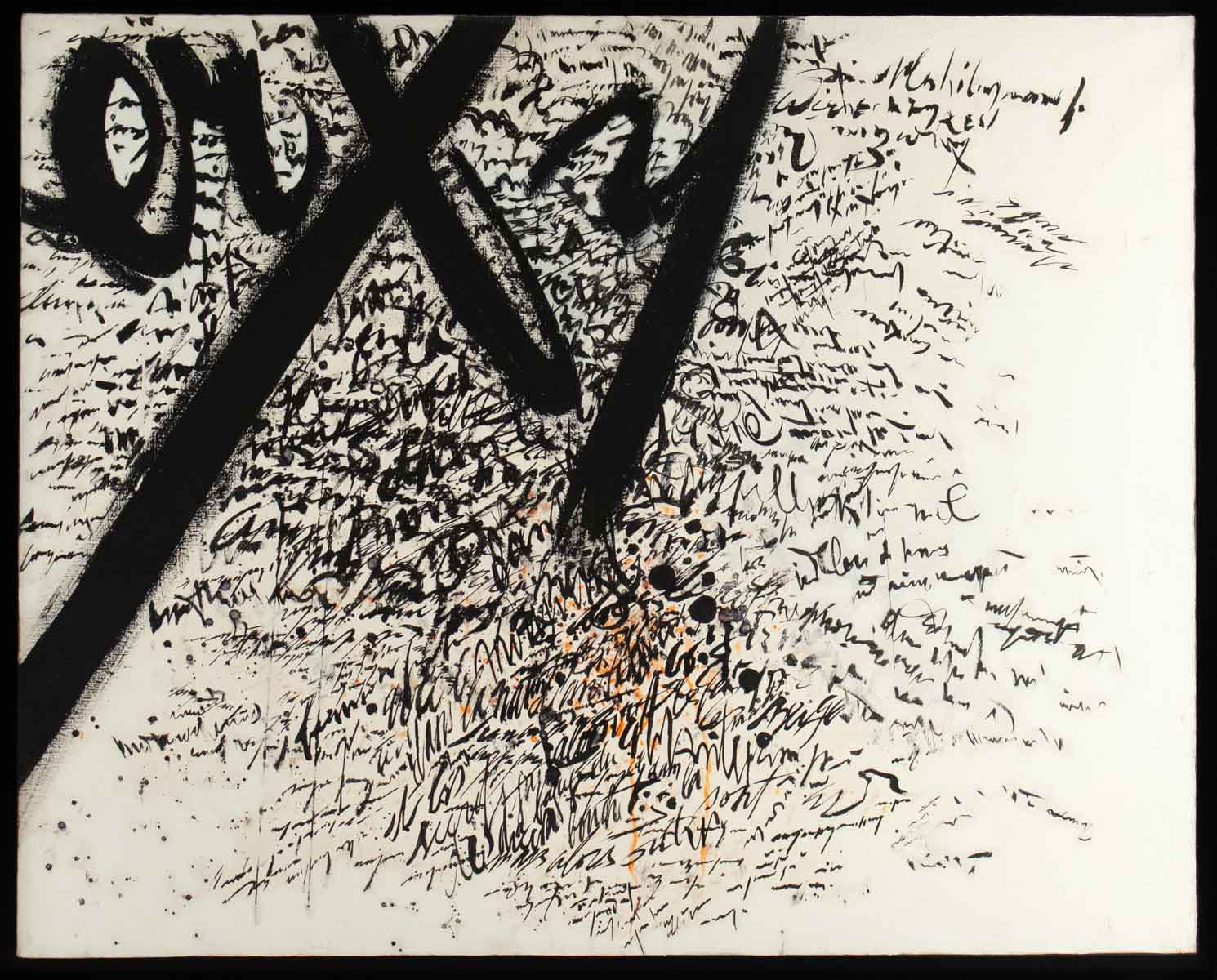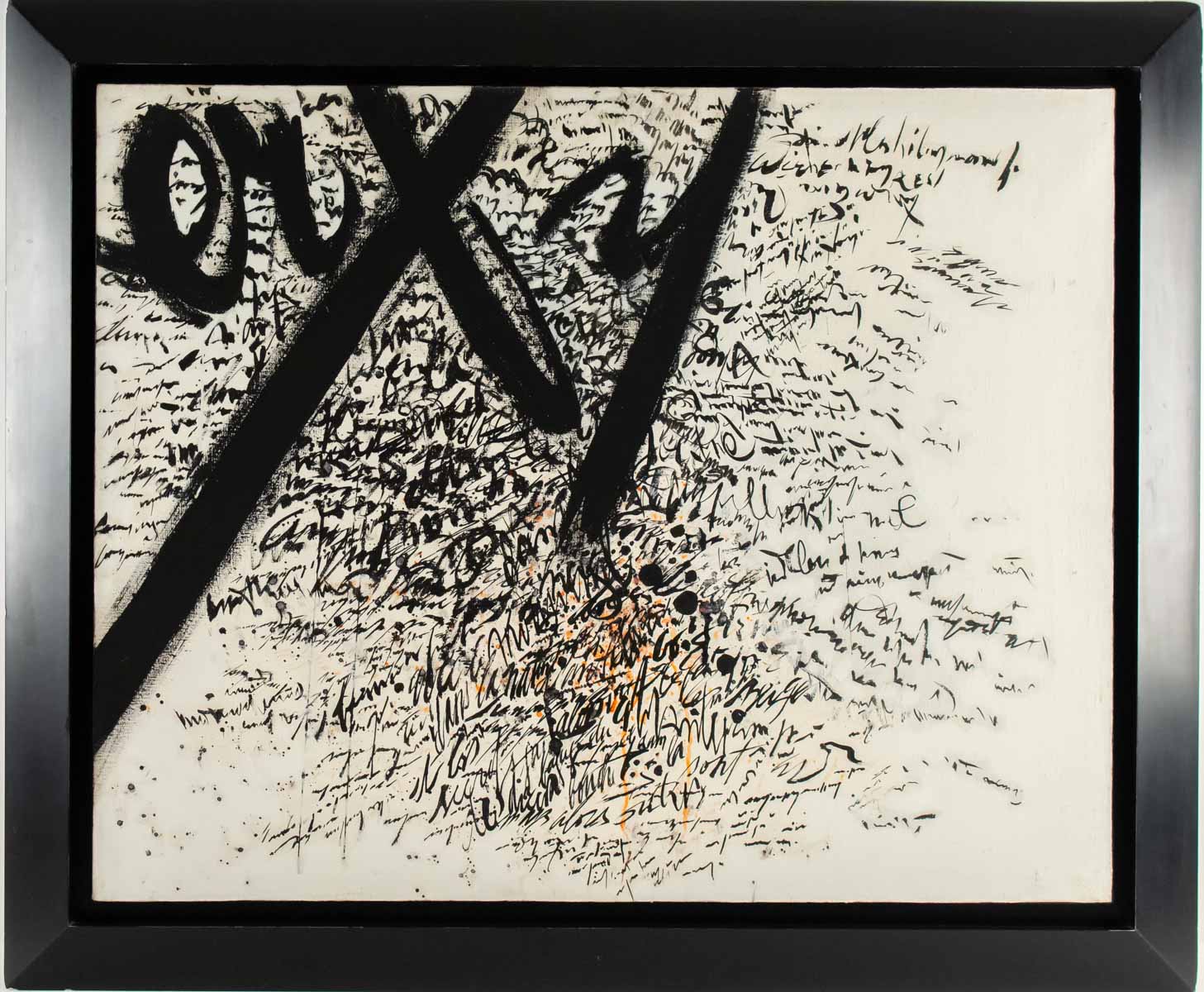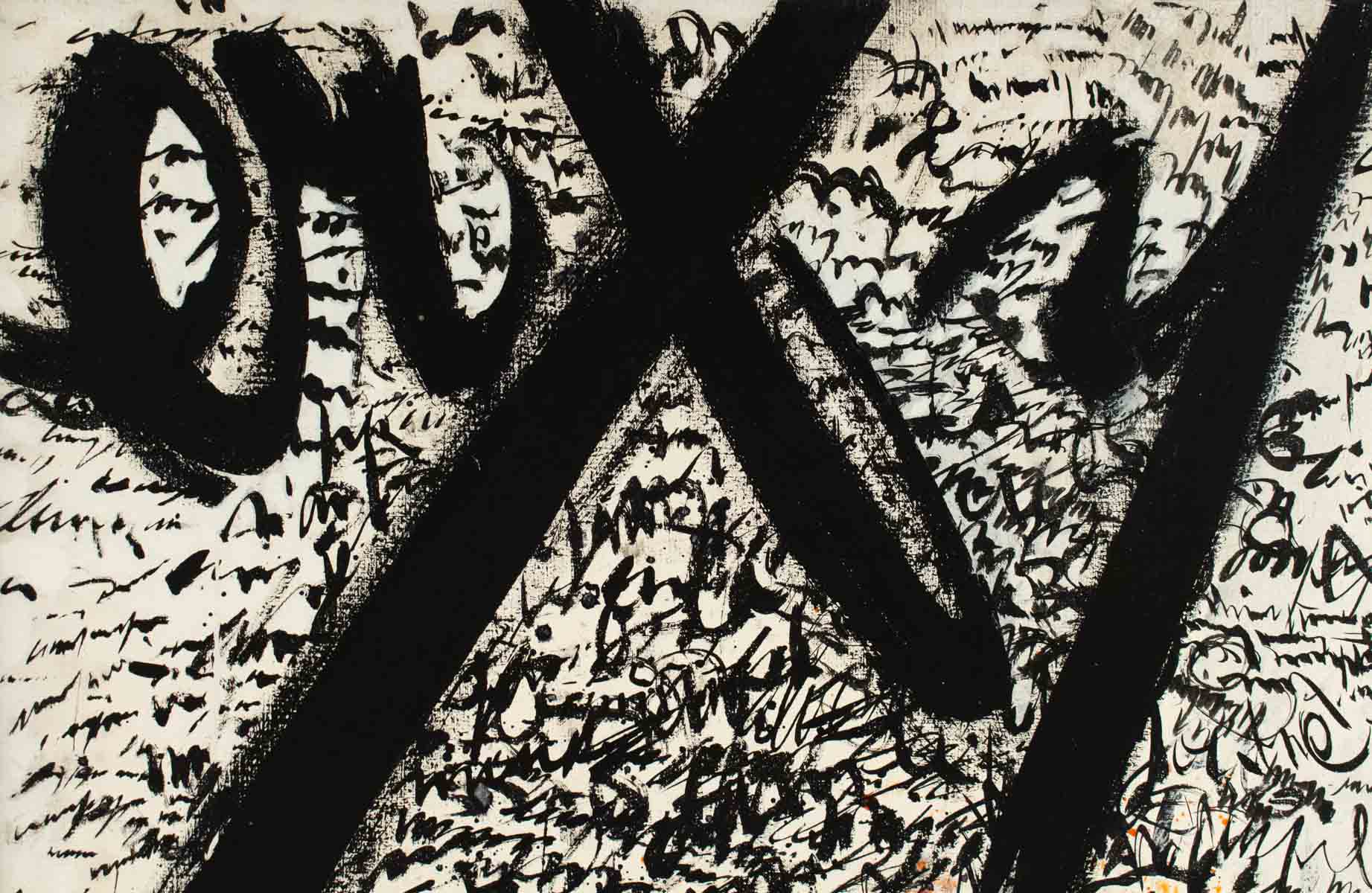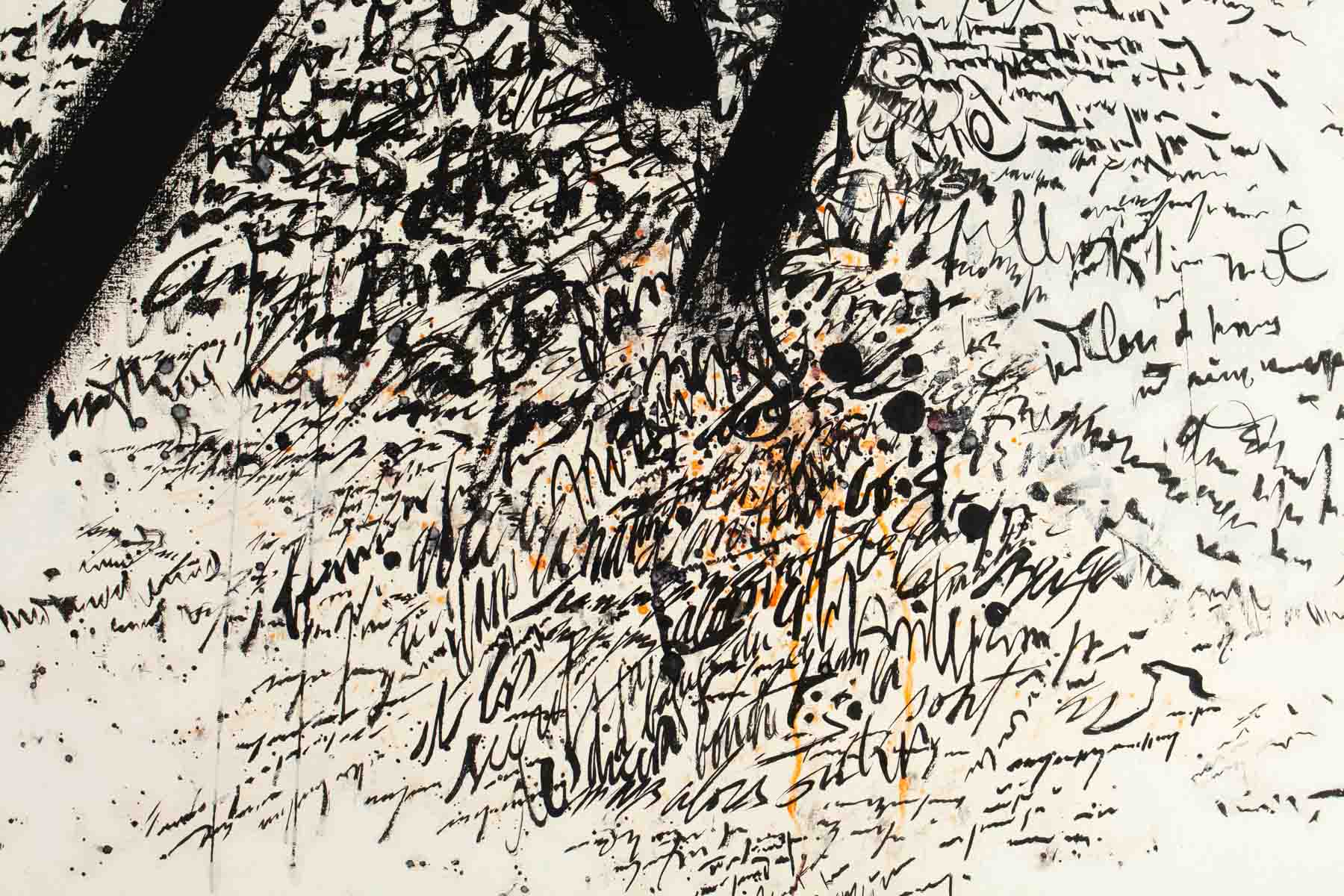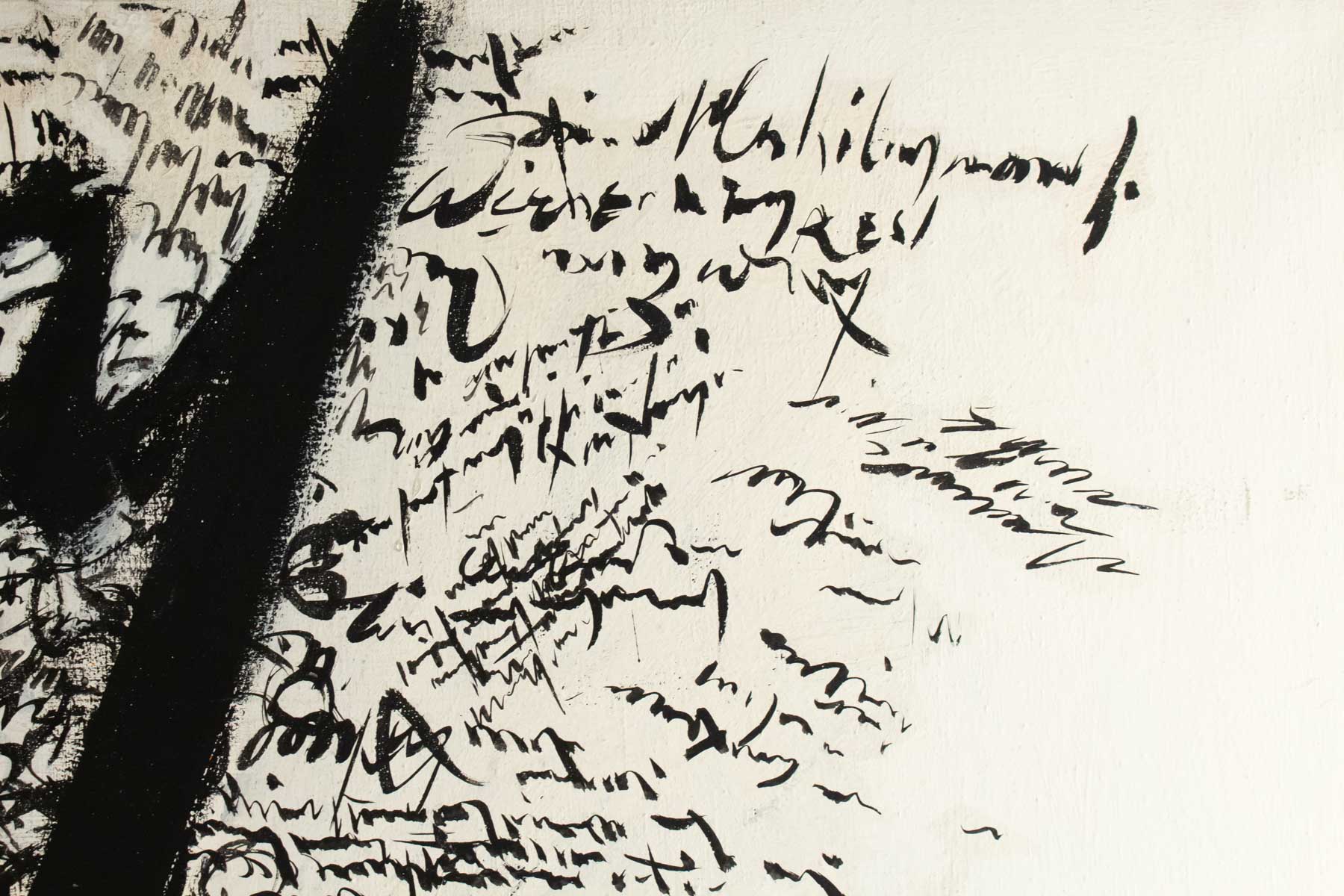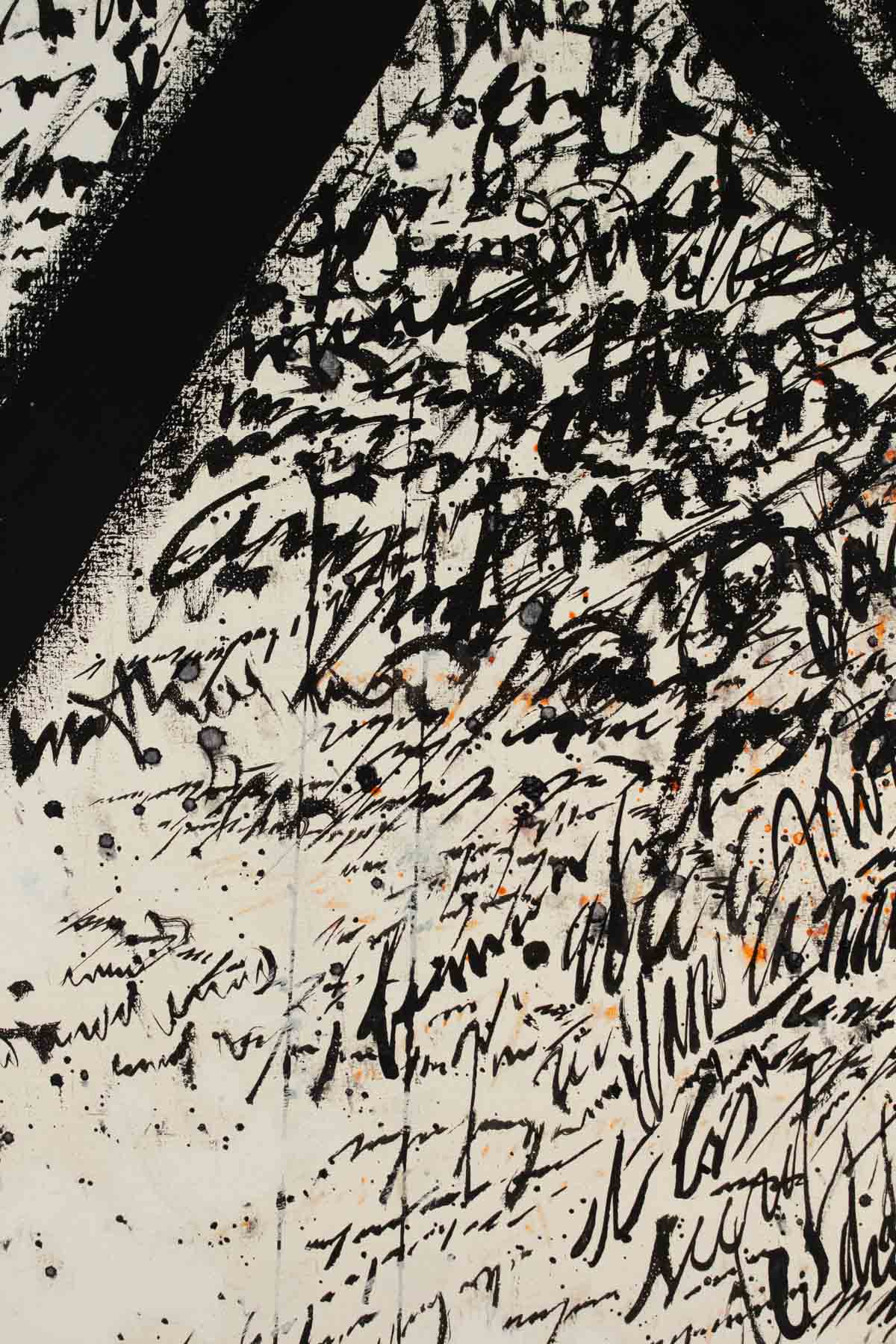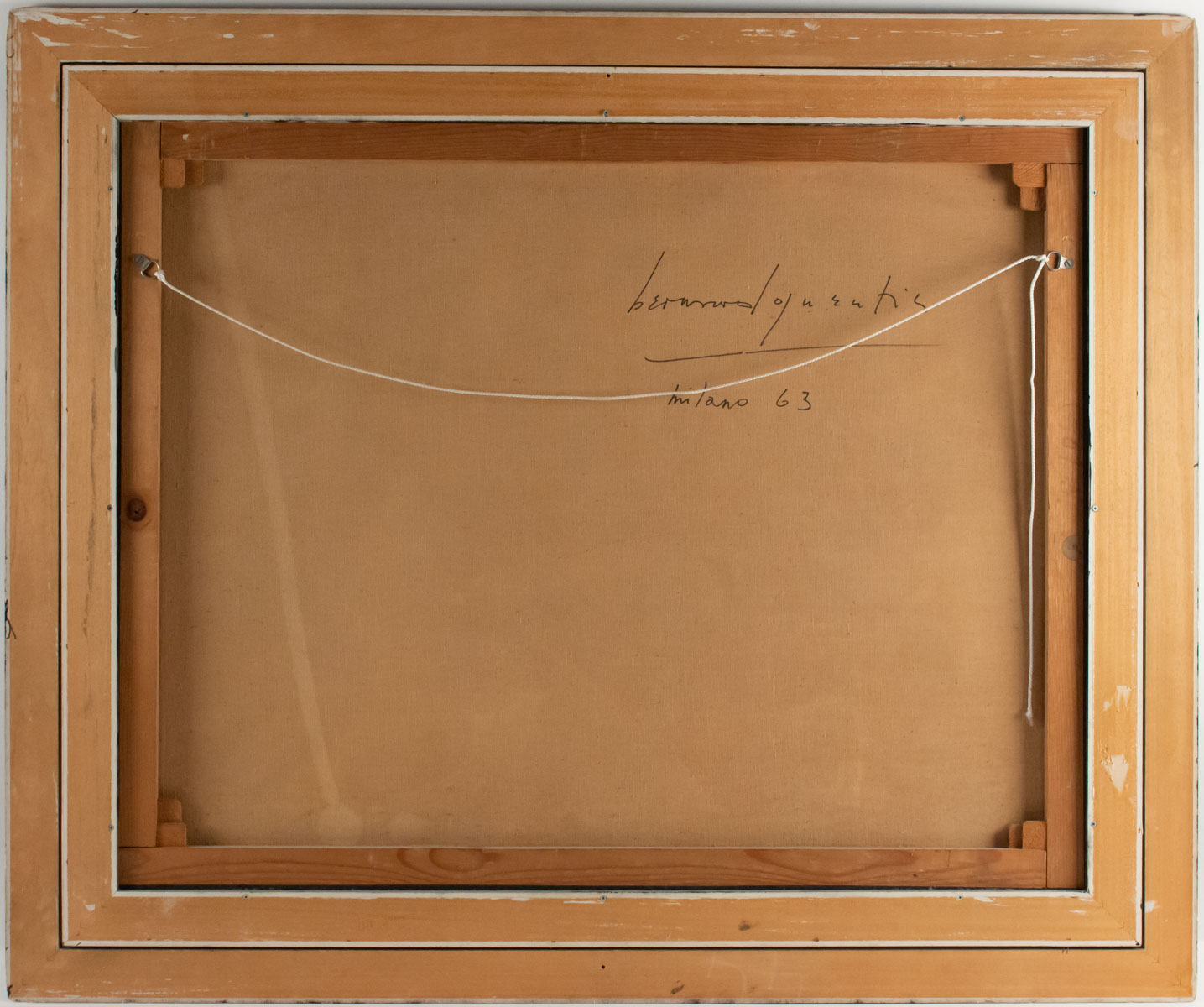Bernard Quentin (1923 – 2020)
Erxy, 1963
Oil on canvas
Signed, dated and located on the back of the canvas “Milano 1963”
Dimensions: 80 x 100cm
Price: €15,000
Confronted with Arabic writing and the Koran, ancient Latin runes and rock paintings, Bernard Quentin experiments with words, letters and language.
The canvas, of large dimensions, is left raw; the black letters of the Latin and Arabic alphabet develop and spread on its surface. They explode, like a tangle of words whose meaning has been lost: only the form and the symbol of the letter interests Bernard Quentin.
In 1940, Bernard Maurice Quentin moved to Paris. He studied painting, sculpture and architecture at the School of Decorative Arts and the School of Fine Arts in Paris. After the Second World War (during which he took part in the resistance), he became familiar with Picasso. From 1946, he became a usual figure in Saint-Germain-des-Prés, which mixed philosophers, poets, writers, painters, sculptors, actors and musicians of existentialist, surrealist or other persuasion, and who constituted, at that time, the core of the Parisian intelligentsia .
Friend of Pierre Dimitrienko, Serge Rezvani and François Arnal, he was influenced by Pablo Picasso and Paul Klee. The first, whom he met in 1945, made him lean towards abstract expressionism. The second led him to abstraction, which earned him his first ideograms and shorthand graffiti.
In 1947, during a trip to the south of France and Italy, he discovered the rock inscriptions of the Vallée des Merveilles, affirming his initial interest in the poetic spontaneity of all imaginary ideograms and other hieroglyphs. In the 1950s, he collaborated with Le Corbusier on architectural projects. He travels to Brazil, Peru, Africa and Eastern Europe, as well as Scandinavian countries, including Lapland, where he studies local runes.
From 1952, he worked on much larger formats, during which his graphic signs lost their geometric aspects and once again developed a gestural dynamic. After 1980, Bernard Quentin produced a series of paintings in which evocations of crowds are intertwined with scripts and graffiti.
Bibliography:
. Article “Bernard Quentin”, October 31, 2011, Oxford Art Online
. Robert Lebel (quote from Bernard Quentin), “ Premier Assessment of Current Art” , Paris, Éditions du Soleil Noir, 1949
. Jacques Dopagne, Michel Broomhead, ” Knowing Quentin’s art of excess “, Paris, 1986
Museums:
. In Paris: National Museum of Modern Art-Centre Pompidou; National Center for Plastic Arts
. In France: Cantini Museum in Marseille; Nantes Museum of Fine Arts; modern and contemporary art museum of Saint-Étienne
Exhibitions:
. Collective exhibitions: in 1947, the second Salon des Réalités Nouvelles, Salon Comparaisons and Salon de Mai; “Sur Quatre Murs” exhibition, Babylon Gallery, 1953; “The New School of Paris”, 1952; “50 years of abstract painting”, Galerie Creuze-Balzac Gallery, 1957…
. Personal exhibitions: May gallery, 1957, Stadler Gallery 1957; Four Seasons Gallery, 1959; Larcade gallery, 1978; “Quentin 1948-1963”, 1984 and “Memoir” 1900, Michel Broomhead Gallery; “Writings and Masses, Works from 1947 to 1963 and Writings and Cut-Outs, Totems, Recent Works”, Arnoud Gallery, 1991…

